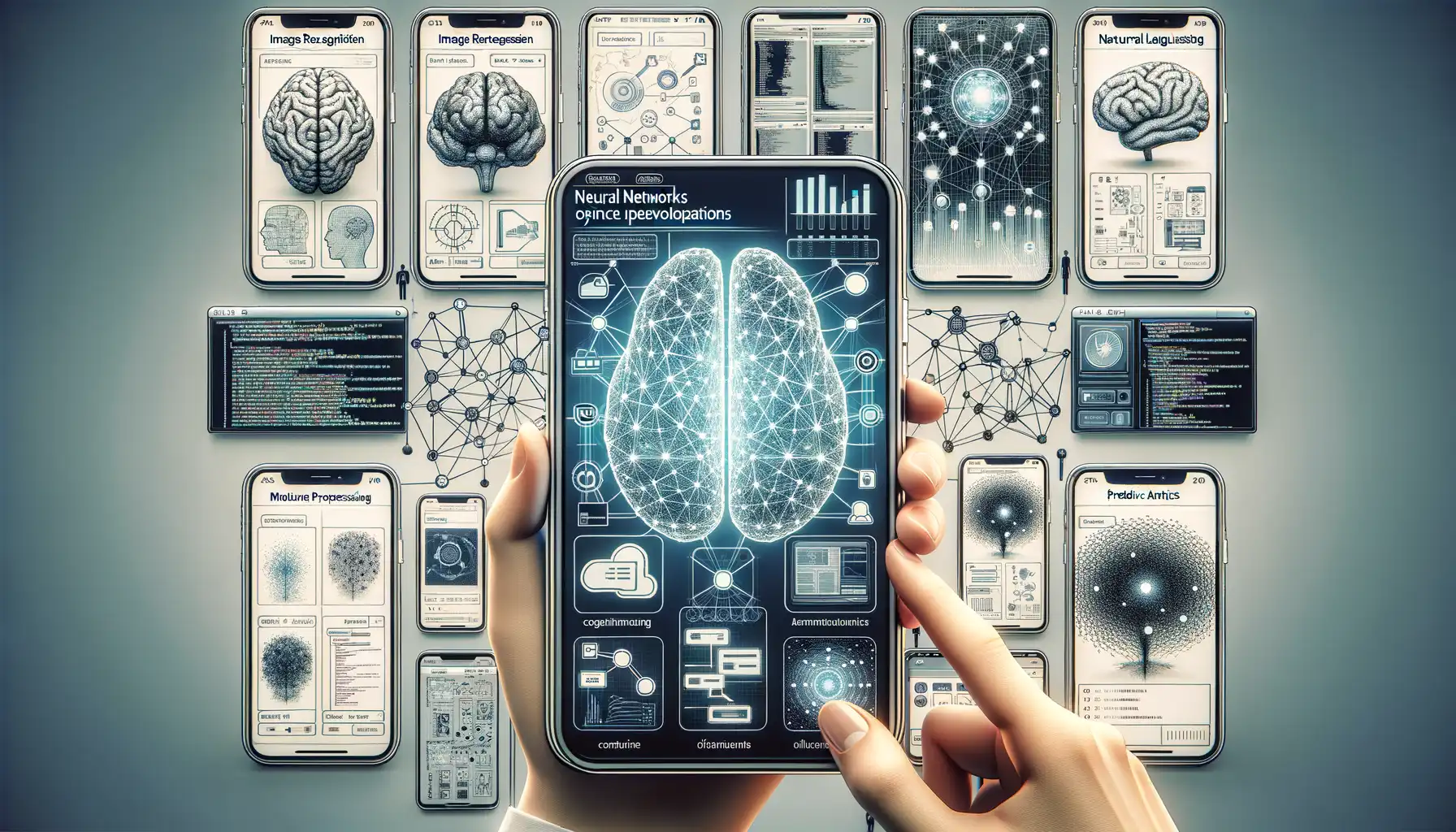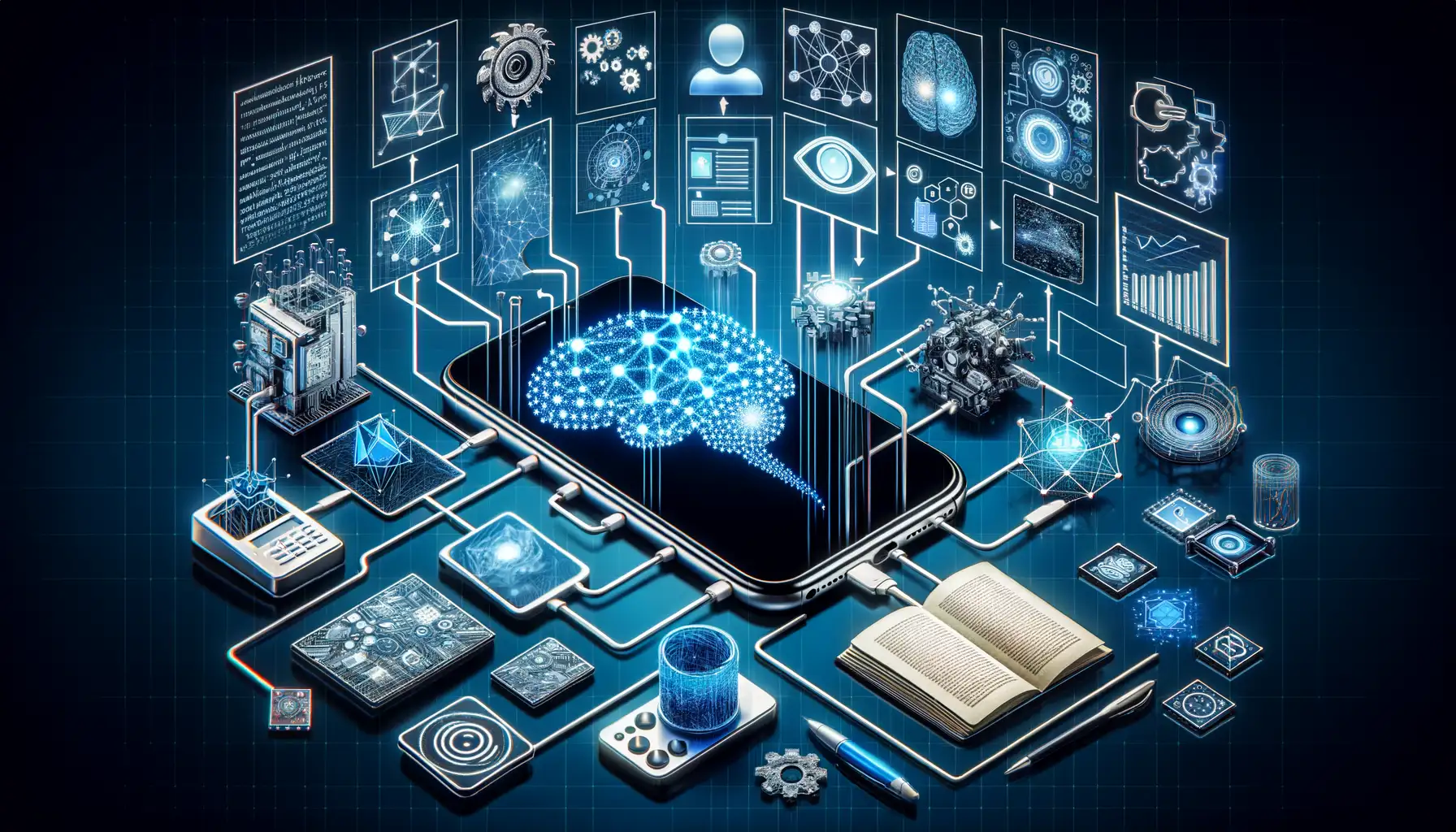Understanding Neural Networks and Their Impact on Mobile Apps
What Are Neural Networks and Why Should You Care?
Picture this: your mobile app learns how you behave, like a friend who knows your coffee order by heart. That’s the magic of neural networks. Inspired by the structure of the human brain, they’re a web of interconnected “neurons” that can process data, spot patterns, and even make decisions. But instead of neurons firing in your head, it’s lines of code crunching numbers at lightning speed.
Why should app developers fall head over heels for neural networks? Because they unlock capabilities like:
- Personalized recommendations: Think Netflix always knowing what you want to watch next.
- Speech recognition: The tech behind Siri flawlessly understanding your commands.
- Advanced image processing: Apps like Snapchat turning selfies into art in real-time.
The Mobile App World Meets Neural Brilliance
Neural networks are shaking up the way apps are built and used. Imagine a fitness tracker that not only counts your steps but also predicts your future performance based on past trends. Or an AI-powered camera app that analyzes your surroundings and suggests the perfect filter. These aren’t distant dreams—they’re happening now.
In short, neural networks are more than a tech buzzword; they’re the secret sauce behind apps that feel smarter, friendlier, and oddly human.
Key Applications of Neural Networks in Mobile App Development

Transforming User Experiences with AI-Driven Recommendations
Imagine opening a mobile app that feels like it knows you better than your best friend. That’s the magic of neural networks at play! By analyzing mountains of user data, these tech wonders craft highly personalized experiences. For instance, in shopping apps, neural networks power recommendation engines that suggest exactly what users need (or didn’t know they needed). Think Netflix nudging you toward your next binge or Spotify serving up the perfect playlist for your mood—it’s all thanks to AI.
Mobile games, too, are getting smarter. Neural networks analyze your play style and adjust gameplay difficulty to keep things exciting without being frustrating. It’s like having a game designer in your pocket, tailoring challenges just for you.
Sharper Visual Features, Smarter Apps
When it comes to seeing the world through a phone, neural networks are game-changers. Take photo editing apps, for example. They use image recognition to identify faces, objects, or even landscapes. Want a flawless selfie? Neural networks handle everything from skin smoothing to background blurring like a pro.
Here are just a few jaw-dropping applications:
- Real-time language translation: Point your camera at a sign, and voilà—instant understanding.
- Fraud detection: Banking apps scan images for forged documents or suspicious patterns.
- Augmented Reality (AR): Neural networks make sure AR objects blend seamlessly into the real world.
Neural networks don’t just make apps work smarter—they make them feel human. That’s the secret sauce behind their growing popularity.
Challenges in Implementing Neural Networks for Mobile Apps

Overcoming the Hurdles of Running Neural Networks on Mobile Devices
Integrating neural networks into mobile apps is like trying to squeeze a high-performance sports car engine into a bicycle – exhilarating potential, but packed with challenges! One of the thorniest issues? The delicate tango between computational power and limited resources. Mobile devices aren’t miniature supercomputers; they juggle constraints like battery life, processing power, and thermal management. Imagine your app delivering jaw-dropping features but draining your user’s battery by lunch – not ideal.
Then there’s the challenge of real-time inference. Neural networks can be computational heavyweights, and speedy predictions (think live translations or facial recognition) are critical for apps. Yet, achieving this on a handheld device without lag feels like threading a needle in a hurricane.
And let’s not forget about compatibility chaos. With Android, iOS, and countless hardware configurations, ensuring your model runs smoothly on all devices can feel like solving an ever-changing puzzle.
- Do you deploy models on-device for offline functionality?
- Or leverage cloud-based processing while wrestling with latency?
Every choice carries trade-offs. But despite these challenges, developers tackle them with grit, innovation, and determination. After all, the promise of smarter, sharper apps is well worth the journey!
Strategies for Optimizing Neural Networks for Mobile Platforms

Making Neural Networks Mobile-Friendly
Optimizing neural networks for mobile platforms isn’t just a technical task—it’s like squeezing a massive genie into a tiny bottle. Mobile devices come with constraints: limited battery life, less processing power, and storage that can quickly run out. Yet, the demand for AI-driven magic in apps is skyrocketing. So, how do we fit these powerhouse algorithms into your pocket while keeping them functional and fast?
One major trick is **model compression**. Picture this: you’ve packed a suitcase but can only take half of what you packed. Techniques like quantization and pruning help strip down neural network models, cutting unnecessary layers or trimming insignificant weights, without losing the core functionality.
Another top strategy? Leveraging **on-device processors** like GPUs or specialized chips (hello, Google’s Tensor Processing Unit). These beauties are designed to handle complex computations much more efficiently than general-purpose CPUs.
- Split processing: Offloading some tasks to cloud servers can lighten the load on devices while ensuring real-time results.
- Hybrid models: Use smaller models on-device that sync with larger, more powerful networks online.
With smart strategies like these, optimizing neural networks for mobile feels less like a compromise and more like a creative challenge.
Future Trends and Innovations in Neural Network-Powered Mobile Apps

Revolutionizing the Everyday with Smarter Mobile Apps
Picture this: a mobile app that can predict your mood based on subtle changes in your typing speed or recommend the exact dish you’re craving just by analyzing your food preferences. This isn’t sci-fi anymore—it’s the power of neural networks shaping our digital world. Future trends are pushing boundaries, making apps not only functional but deeply intuitive.
Think of hyper-personalization. With advances in neural network architectures like transformers, apps are learning to anticipate user needs almost telepathically. Imagine a fitness app that adjusts your workout plan in real time based on your heart rate or a language-learning app that creates bespoke lessons based on your speaking habits.
And let’s talk sustainability. Neural network-powered apps are becoming greener, processing complex computations directly on your device through on-device AI. No more heavy reliance on cloud servers burning energy—just seamless speed and lower resource consumption.
- Advanced speech-to-text that understands accents or unique speech patterns with ease.
- Ultra-responsive augmented reality (AR) for immersive experiences in shopping, gaming, or education.
The future screams innovation. We’re heading straight into an era where your apps don’t just respond—they resonate.
